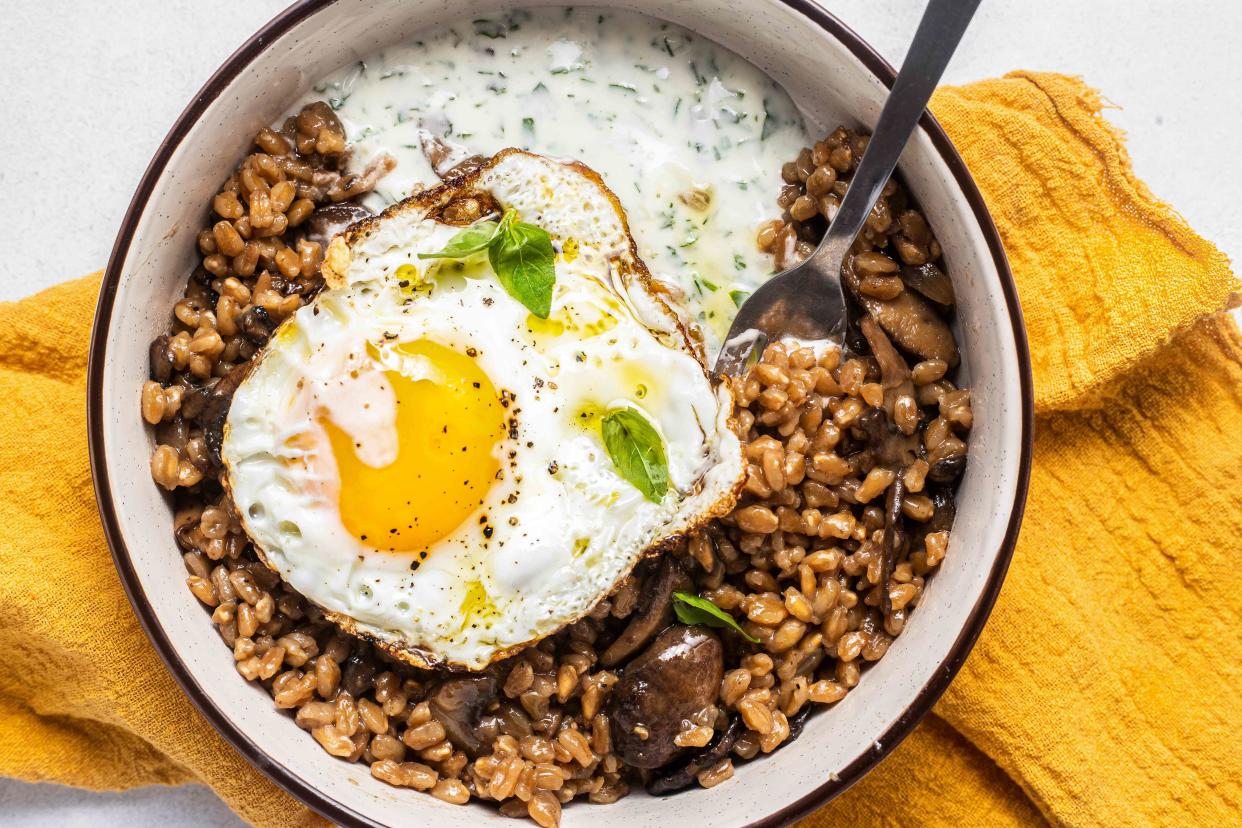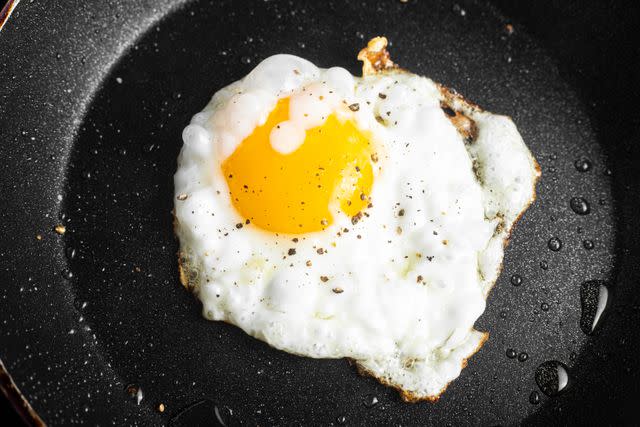This 1-Ingredient Upgrade for Fried Eggs Will Blow Your Socks Off
It's even better than butter.

Simply Recipes / Karishma Pradhan
Fried eggs are my favorite "struggle food." When I don't have the energy to cook, I slap a fried egg on top of something and call it a meal. Rice bowls, avocado toast (or plain toast), and leftover pasta are prime candidates, but fried eggs belong on everything from roasted veggies to polenta. An egg adds protein and the yolk acts as a sauce, enriching everything it touches.
I've always cooked my fried eggs the same way: a little oil or butter in a small nonstick skillet over medium heat—I like my fried eggs to have slightly crispy undersides. It's such a simple food that I never really considered cooking it any other way. That is... until I came across cream eggs.
What Are Cream Eggs?
I've been following the Ideas In Food blog by Aki Kamozawa and Alex Talbot since the early 2010s. The blog is aptly named, rarely featuring recipes and focused instead on creative ideas. It's a gold mine for curious cooks who like trying new things or taking an idea and running with it.
In 2019, they posted about caramelized cream eggs, a technique where instead of using butter or oil to fry eggs, you use heavy cream. Initially I thought that cooking eggs in cream might compromise their crispy bottoms, and "frying" an egg in a liquid just sounded counterintuitive.
However, I had both eggs and heavy cream in the fridge, so even if the outcome was terrible (which, given that the only ingredients were eggs and cream, I highly doubted) I would have wasted less than a dollar in ingredients to satisfy my curiosity.
To my amazement and delight, the cream eggs were not only delicious, but they tasted even more buttery than eggs fried in actual butter! And for all my worry about the eggs lacking crispness, the cream eggs browned beautifully on the bottom and were somehow both lightly crisp and very tender.

Simply Recipes / Karishma Pradhan
How To Make Cream Eggs
The original cream egg recipe has you add a shallow puddle of heavy cream and the eggs to a cold nonstick pan, then bring the heat up to medium-high, cooking the eggs until the cream has evaporated and the eggs are cooked.
I prefer to heat the cream (about three tablespoons for two eggs in an eight-inch skillet) until it starts to simmer, then crack in the eggs. I season the eggs with salt and pepper and wait patiently for the cream to evaporate. This only takes a few minutes, but it feels like forever as the aroma of brown butter starts to waft up from the pan.
Once the cream is evaporated and the egg whites are set, I remove the pan from the heat and cover it with a lid to cook the yolks to perfection.
Why Cream Eggs Are So Delicious
When I say that the cream evaporates, that's not the whole story. Cream is mostly water, but it is also very high in fat and milk solids, a term that refers to the protein, carbohydrates, and minerals in dairy products. As you simmer cream, the water indeed evaporates, turning into steam. However, fat and milk solids cannot evaporate, so they remain in the pan, becoming more and more concentrated.
Once all the water in the cream has evaporated, the fat "fries" the eggs, and the milk solids start to turn golden, just like when you make brown butter.
Why, though, do eggs cooked in cream taste even more buttery than those fried in butter? Because cream actually contains more milk solids than butter does. Butter is mostly fat. So, counterintuitively, for the most buttery-tasting, tender-yet-caramelized eggs, cook them in cream instead of butter or oil. Your struggle meals will taste like you've really got it together.
Read the original article on Simply Recipes.






